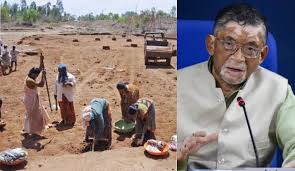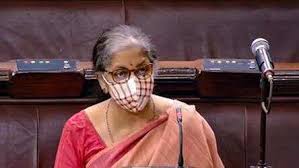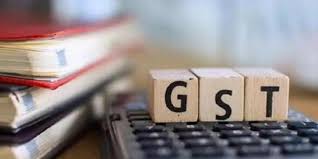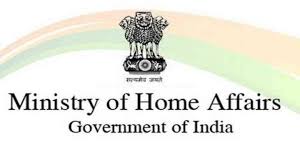Feature
Revolutionary budget sparks Rajan to cut rates

Mumbai: The second unscheduled cut on Wednesday – within two months – in the repo rate at which the Reserve Bank of India (RBI) lends to commercial banks was not as unexpected as the first in January.
Indeed, it could even be called expected after the weekend’s historic announcement by Finance Minister Arun Jaitley in his first full budget speech to the Lok Sabha of the government signing the Monetary Policy Framework Agreement with the RBI for controlling inflation.
The agreement will become a law that will provide for a monetary policy committee, Jaitley said.
Signed last month, the agreement is to “primarily maintain price stability while keeping in mind the objective of growth.” It says the RBI will aim to bring retail inflation below six percent by January 2016 and to around four percent by fiscal 2016-17.
Perhaps RBI Governor Raghuram Rajan was being enigmatic in keeping with his “rockstar” image in deflecting spotters of Wednesday’s rate cut off his trail, when he said on Monday that though central banks everywhere are reducing interest rates to very low levels, the RBI is unable to do so quickly owing to “high inflation”.
“A lot of that money is coming to us. We have got an avalanche of capital inflows. Our problem is we also have high inflation, we cannot cut interest rates very quickly to the bone in order to tell those countries – don’t come here expecting high interest rates,” Rajan told a group of students here.
The consumer price index (CPI)-based inflation rose to 5.11 percent in January from 4.28 percent last December.
Indeed, the impression that Rajan’s statement Monday was deflecting attention from Wednesday’s cut by 25 basis points is strengthened by the text of the RBI release which said that “given low capacity utilization” and still-weak indicators of production and credit off-take, it is appropriate for RBI to be pre-emptive in its policy action to utilize the available space for monetary accommodation”.
If anything, Jaitley, in his landmark budget, had provided the RBI governor some reason not to cut interest rates by extending the target deadline for controlling fiscal deficit to three percent, reasoning that insistence on a timetable to contain the deficit would harm growth prospects.
The targets for the next three years have been set at 3.9 percent for 2015-16, 3.5 percent for 2016-17, and 3.0 percent for 2017-18.
Rajan, who in announcing the rate cut in January had stated that “the key to further easing are data that confirm continuing disinflationary pressures and sustained high quality fiscal consolidation”, said on Wednesday after reducing the rate to 7.5 percent that “the fiscal consolidation programme, while delayed, may compensate in quality, especially if state governments are cooperative”.
According to data released this week, the fiscal deficit exceed the budget estimate within the first 10 months of the current fiscal (April-January), crossing 107 percent at Rs.568,000 crore.
It is here that the 2015-16 budget comes as a quasi-revolutionary measure in India’s economic history, signalling the shift in budgetary philosophy on subsidies from a rights-based to a reformist one following changes made in their modes of disbursement.
This occurs under the head of “Good Governance” in Jaitley’s budget speech, which sets out the changes being brought about through the cashless transfer of subsidy through the direct benefit transfer system.
India was now ready to “take off” and “fly”, Jaitley said, its engines finding extra thrust from falling oil prices, but he as finance minister was being held in check by low tax buoyancy where the tax to GDP ratio is a measly 10 percent.
Jaitley Saturday proposed to cut the corporate tax rate by five percent to 25 percent over the next four years while increasing the service plus education cess from 12.36 percent to a consolidated 14 percent.
The indirect tax proposals would net Rs.23,383 crore while the direct tax proposals would see Rs.8,315 crore revenue forgone.
Even as he announced a range of social security schemes there were heavy cuts in social sectors ranging from agriculture, drinking water and sanitation, panchayat raj, water resources to the ministry of women and child development to the tone of Rs.439,192.25 crore, in order to keep to the fiscal deficit target. There is also a reduction in allocation to schemes for scheduled castes and scheduled tribes.
Jaitley has attempted to realize multiple goals like higher growth, increase in investment and wider social safety nets in line with his philosophy about reforms in India being the art of the possible and not about a few “big bang” ideas.
“In a country where 30 percent of people are living below the poverty line, your reforms cannot be one that you simply confront public opinion, or the sectors that you simply find a huge amount of reluctance for reformation,” Jaitley said last year at the World Economic Forum’s India Economic Summit here.
If the Goods and Services Tax is implemented from the start of the 2016-17 fiscal to usher in a common market, Jaitley, who learnt his economics in Delhi University, would be bringing to fruition the dreams of the nationalist bourgeoisie which sustained Mahatma Gandhi in his struggle against the British Empire.
Entertainment
Meghalaya Reserves Legalized Gambling and Sports Betting for Tourists

The State Scores Extra High on Gaming-Friendly Industry Index
Meghalaya scored 92.85 out of 100 possible points in a Gaming Industry Index and proved to be India’s most gaming-friendly state following its recent profound legislation changes over the field allowing land-based and online gaming, including games of chance, under a licensing regime.
The index by the UK India Business Council (UKIBC) uses a scale of 0 to 100 to measure the level of legalisation on gambling and betting achieved by a state based on the scores over a set of seven different games – lottery, horse racing, betting on sports, poker, rummy, casino and fantasy sports
Starting from February last year, Meghalaya became the third state in India’s northeast to legalise gambling and betting after Sikkim and Nagaland. After consultations with the UKIBC, the state proceeded with the adoption of the Meghalaya Regulation of Gaming Act, 2021 and the nullification of the Meghalaya Prevention of Gambling Act, 1970. Subsequently in December, the Meghalaya Regulation of Gaming Rules, 2021 were notified and came into force.
All for the Tourists
The move to legalise and license various forms of offline and online betting and gambling in Meghalaya is aimed at boosting tourism and creating jobs, and altogether raising taxation revenues for the northeastern state. At the same time, the opportunities to bet and gamble legally will be reserved only for tourists and visitors.
“We came out with a Gaming Act and subsequently framed the Regulation of Gaming Rules, 2021. The government will accordingly issue licenses to operate games of skill and chance, both online and offline,” said James P. K. Sangma, Meghalaya State Law and Taxation Minister speaking in the capital city of Shillong. “But the legalized gambling and gaming will only be for tourists and not residents of Meghalaya,” he continued.
To be allowed to play, tourists and people visiting the state for work or business purposes will have to prove their non-resident status by presenting appropriate documents, in a process similar to a bank KYC (Know Your Customer) procedure.
Meghalaya Reaches Out to a Vast Market
With 140 millions of people in India estimated to bet regularly on sports, and a total of 370 million desi bettors around prominent sporting events, as per data from one of the latest reports by Esse N Videri, Meghalaya is set to reach out and take a piece of a vast market.
Estimates on the financial value of India’s sports betting market, combined across all types of offline channels and online sports and cricket predictions and betting platforms, speak about amounts between $130 and $150 billion (roughly between ₹9.7 and ₹11.5 lakh crore).
Andhra Pradesh, Telangana and Delhi are shown to deliver the highest number of bettors and Meghalaya can count on substantial tourists flow from their betting circles. The sports betting communities of Karnataka, Maharashtra, Uttar Pradesh and Haryana are also not to be underestimated.
Among the sports, cricket is most popular, registering 68 percent of the total bet count analyzed by Esse N Videri. Football takes second position with 11 percent of the bets, followed by betting on FIFA at 7 percent and on eCricket at 5 percent. The last position in the Top 5 of popular sports for betting in India is taken by tennis with 3 percent of the bet count.
Local Citizens will Still have Their Teer Betting
Meghalaya residents will still be permitted to participate in teer betting over arrow-shooting results. Teer is a traditional method of gambling, somewhat similar to a lottery draw, and held under the rules of the Meghalaya Regulation of the Game of Arrow Shooting and the Sale of Teer Tickets Act, 2018.
Teer includes bettors wagering on the number of arrows that reach the target which is placed about 50 meters away from a team of 20 archers positioned in a semicircle.
The archers shoot volleys of arrows at the target for ten minutes, and players place their bets choosing a number between 0 and 99 trying to guess the last two digits of the number of arrows that successfully pierce the target.
If, for example, the number of hits is 256, anyone who has bet on 56 wins an amount eight times bigger than their wager.





















